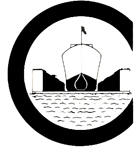Over 150 years of expertise in marine railways and floating dry docks
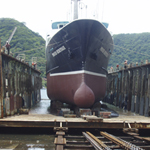 |
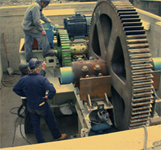 |
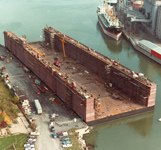 |
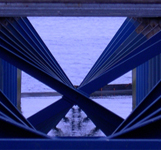 |
|
An
Introduction to Railway Dry Docks
and Transfer Systems
Part
9 - Difficult Drydocking
|
3. Side haul railway dry docks |
More and more new vessels with unconventional hull shapes are being constructed. When these are to be drydocked, they often pose difficult problems of stability, load concentration, access, and blocking. Among such craft are hydrofoil vessels, catamarans, and surface warships with deep-draft propellers and sound detecting devices. Railway dry dock cradles can be designed and built so as to cope with some of these problems. The outshore section can have an access basin to receive sonar domes or similar protuberances. The wedge shape of the cradle provides the space in the undercarriage to put in a basin that remains flooded while the dock is operative and is only dewatered in the full-up position when needed. At sites with adequate tide range, the basin can be omitted so long as the cradle beams are designed to be removable in way of deep hull projects. Where the undercarriage is shallow, spaces located in the cradle runners can be inserted to provided room for rudders and propellers. Hydrofoil vessels having fixed foils can be drydocked easily on railway dry docks by allowing the extending foils to project beyond and below the cradle deck. In other types of dry docks the platform must be made wider than the foil span, which makes the facility too costly. Cradles equipped with releasing bilge and keel blocks, sliding retractable keel blocks and means to remove blocks, beams or uprights easily, permit many types of vessels to be accommodated with minimum loss of time and minimum manpower. |
Progress...the result of never being satisfied
Crandall
Dry Dock Engineers, Inc.
Established 1854
(888) DRYDOCK crandalldd@aol.com
